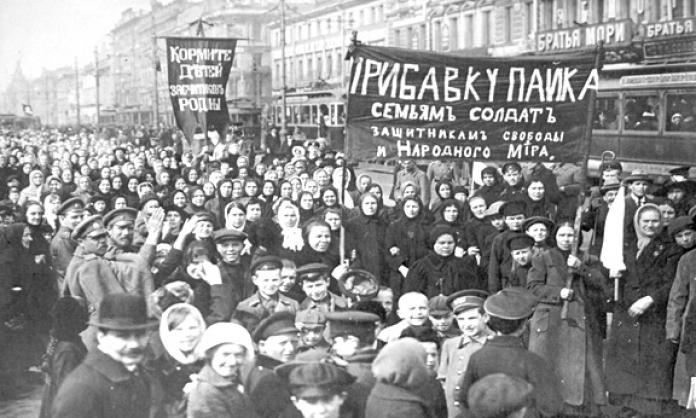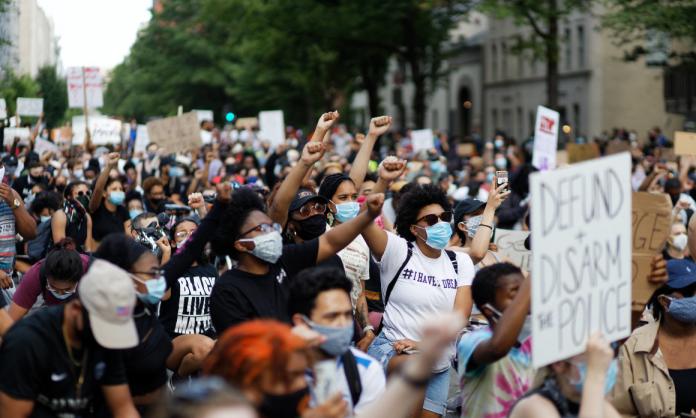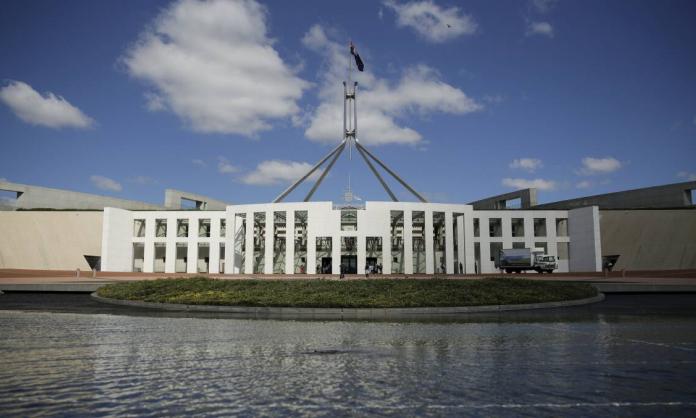The Russian revolution may have taken place nearly a century ago, but attacks on it continue. In school history courses, academia, and in popular culture there is an ongoing attempt to discredit the revolution and its leaders, and to establish that Stalinism was the inevitable outcome of the uprising.
The debate about Russia is not simply a historic curiosity. The revolution is so relentlessly attacked because it was the greatest ever assault on world capitalism. It proved that it is possible for workers to rise up and not only break an authoritarian and exploitative system, but take control of society and run it themselves. Though it was eventually defeated, the revolution opened up the possibility of overthrowing world capitalism, of pulling down the rich and the powerful, abolishing class divisions and beginning a new phase of human history – one based on co-operation, common ownership, peace and genuine equality.
This makes the true history of the revolution dangerous to the powerful minority who control our world. It is why they try to bury the legacy of 1917 under a mountain of lies.
“October was just a coup”
The first great lie is that the revolution itself was little more than a coup. Orlando Figes, in his People’s tragedy, the Russian revolution 1891-1924 dismisses the October uprising as “in reality such a small-scale event, being in effect no more than a military coup, that it passed unnoticed by the vast majority of inhabitants of Petrograd”.
In fact the October revolution was both overwhelmingly popular and a genuinely mass uprising. This is easily verified by looking at what even opponents of the Bolsheviks said at the time. Julius Martov, one of the central Menshevik leaders, wrote several weeks later: “Understand, please, that before us after all is a victorious uprising of the proletariat – almost the entire proletariat supports Lenin and expects its social liberation from the uprising”.
The revolution is so relentlessly attacked because it was the greatest ever assault on world capitalism.
Nikolai Sukhanov, a historian sympathetic to the Mensheviks who was in Petrograd during the revolution, wrote along similar lines: “To talk about military conspiracy instead of national insurrection, when the party was followed by the overwhelming majority of the people, when the party had already de facto conquered all real power and authority, was clearly an absurdity.”
The Bolsheviks themselves, far from being some small group of conspirators, were by October 1917 a mass working class party with around a quarter of a million members. In almost every factory and barracks, the militants were Bolshevik party members. In the big cities, particularly Moscow and Petrograd, the overwhelming bulk of the workers and soldiers followed them. In the Moscow garrison, the Bolsheviks received 90 percent of the vote in soviet elections.
It is true that the October insurrection itself was not the disorderly, spontaneous mass rebellion that the February revolution which overthrew the Tsar had been. It was an organised, planned seizure of power. But this does not make it the work of a conspiratorial or elite minority. The two main organisations through which the insurrection was planned and carried out were the Bolshevik party and the Soviet. While the Bolsheviks were themselves a mass organisation, the soviets were even broader, pulling in, organising and representing the overwhelming majority of soldiers, workers and peasants.
The soviets were highly democratic and participatory organisations, seen by the masses as their government, accountable to the people. The immense political authority the soviets had among workers and soldiers was the reason the insurrection could be carried out so smoothly, particularly in Petrograd.
It is also the case that the “orderly” character of the October revolution is overstated by many histories. In reality the two weeks leading up to October 24 were filled with raucous mass meetings, demonstrations and public speeches. Everywhere factories were passing resolutions demanding an immediate transfer of power to the soviets, and proclaiming their loyalty to the “Military Revolutionary Committee” that had been established to co-ordinate the uprising.
Bolshevik leaders were going from one demonstration to another, going hoarse talking to thousands of workers and soldiers. Newspapers and pamphlets flooded the streets, debating the latest moves. Red Guards – the workers’ militia in Petrograd numbering some 25,000 – began drilling openly in parks and boulevards. In every factory furious organisation took place to prepare for the transfer of power.
“Conned by Bolshevik fanatics”
The second lie, necessary due to the implausibility of the first, is that the masses were temporarily duped into supporting Lenin and the Bolsheviks. Conveniently, this is also a morality tale about the irrationality of the mob when riled up by demagogic fanatics.
But there was nothing irrational or unthinking about the increasing support given to the Bolsheviks over the course of 1917. Quite the opposite.
Initially many had recoiled from Bolshevism, fearing that the measures they proposed were too extreme.
But as the revolution developed, it became ever clearer that only the insurrectionary seizure of power by the soviets, for which only the Bolsheviks stood, could ensure the goals of the revolution were achieved.
The February revolution had been driven by three core demands. An end to the war, land to the peasants, and bread for the workers.
But the capitalist class, its backers in the provisional government, and the moderate socialist parties were determined to continue prosecuting the war at any cost. They would not take the land from the landlords or back the peasant uprisings. And they would not defend workers against attacks from their bosses. Moreover, as 1917 went on, they all showed they were willing to resort to extreme authoritarian means, including imposing a military dictatorship, to stop the masses pressing to have any of their demands met.
What finally convinced the mass of the population that the Bolsheviks were right, and the provisional government had to be overthrown, was the Kornilov coup – the botched attempted by a reactionary Tsarist general to seize power in August. This coup attempt, only prevented because the Bolsheviks mobilised workers and soldiers to stop it, was backed by almost all of respectable society. It proved once and for all that there was no middle ground, that the choice was between soviet rule or military dictatorship. It was in the weeks that followed that the Bolsheviks began to win majorities in even the most conservative parts of the country.
Far from being victims of crude populism, the Russian working class, through their own experience of the revolution and the actions of the different political forces within it, broke with all the prejudices and “common sense” ideas that propped up the old society, and came to understand the reality that faced them. The Bolsheviks’ arguments played a crucial role in this, but it was subordinate to the part played by the struggle itself. As one worker put it, “the Bolsheviks always told us it was not they who would convince us of their slogans, but life itself”. By October, this is what had happened.
“Revolutions end in disaster”
The third lie about the revolution is that, however well intentioned, the rise of Stalin in the 1920s proves that a truly radical revolution could never succeed. This argument has two parts. The first is simply anti-democratic – the idea that genuine democratic control over society will inevitably end in anarchy and/or dictatorship.
There is something bizarre in the argument put by defenders of the existing social order, in which a tiny minority have real power, that any attempt to fundamentally democratise society will lead to an unscrupulous minority taking over.
Most people spend their lives accepting that they have little control over their lives, let alone society. Revolutions, and none more so than the Russian revolution, turn this on its head. Revolutions unleash in millions of people the realisation that you don’t have to take orders from your superiors, that it is possible to stand up against the powerful. There is no situation psychologically less suited to a shadowy dictator taking control.
The second part of the “disaster was inevitable” argument is that there was something particularly about Bolshevism that opened the way for Stalin and the gulags. Evidence for this is usually a few lines from Lenin’s 1902 pamphlet What is to Be Done, ripped out of context to imply that Lenin favoured some kind of nefarious secret society bend on world domination.
Historian Lars Lih is on the money when he says that most critics who quote What is to be Done clearly haven’t read it. This pamphlet is actually about how a mass socialist organisation can be built among Russian workers, which is, funnily enough, precisely what Lenin and his supporters went on to do.
Even the most cursory glance at the workings of the Bolsheviks before and during 1917 reveals a party that was extremely democratic and lacking all traces of elitism or authoritarianism.
So if all this is true, how was Stalin able to take over? Why did the party degenerate in the 1920s?
The basic reason was that the revolution did not spread beyond Russia. Until Stalin’s theory of “socialism in one country” it was the ABC of Marxism that socialism could not be built in a single nation surrounded by hostile capitalist powers. It was universally agreed that if capitalism was not overthrown in Europe, the Russian revolution would fall. This is why Lenin, Trotsky and the other Bolshevik leaders put great emphasis on encouraging the revolutionary movement in Europe, movements that succeeded (not that you hear about it today) in breaking up the Austro-Hungarian empire, bringing down the German Kaiser and ending the first world war.
For several years it was a very close run thing. But by the early 1920s the revolutionary wave was defeated, and capitalism stabilised. The Russian working class had been decimated by the civil war, and without support from a victorious revolution in one of the advanced European countries, the revolution, starved and besieged, could not endure. It was in this context that Stalin was able to wage a bloody struggle to destroy all that remained of workers’ power in the 1920s.
Of course the lie that there was continuity between Lenin and Stalin, between the insurrection and the gulag, was very convenient. Convenient for Stalin, who in the name of socialism brutally violated all of its principles. And just as convenient for the capitalist West, who pointed to Stalinism as the inevitable result of any attempt to change society for the better.
They are still at it. But while it is important to take on their lies, we can also take heart from the furious intensity with which they go about trying to discredit the Russian revolution. That intensity is driven not only by hatred of those who would overturn the existing society, but also by fear. Fear that we’ll do it again.











